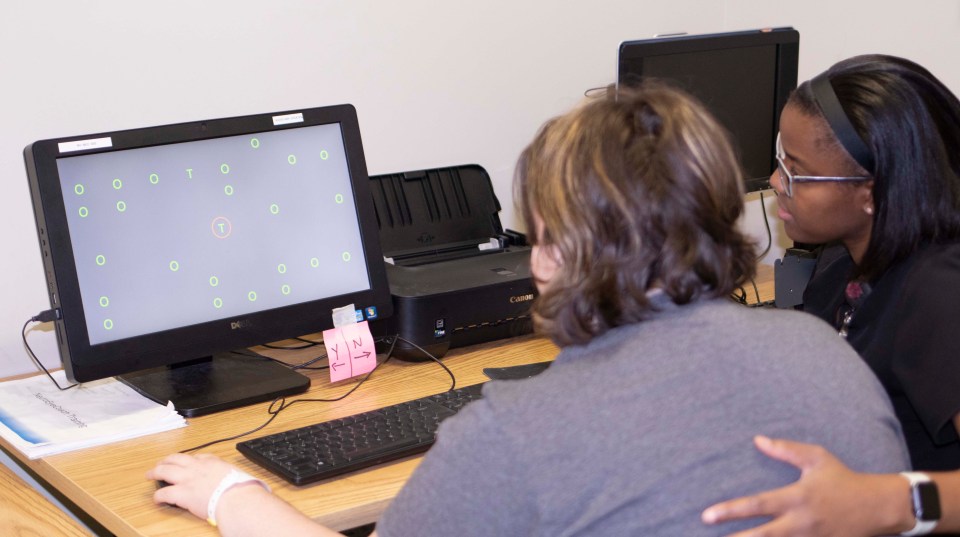After a stroke, nearly two-thirds of patients report visual impairment. As vision comprises one-third of the body’s balance system, improving these impairments and learning strategies for adapting to them can make a remarkable impact on a patient’s recovery.
However, it’s an area of rehabilitation that’s not frequently addressed—something the team at Encompass Health Rehabilitation Hospital of Altamonte Springs recognized shortly after opening its doors.
To fill that need, the hospital relies on innovative software and trained occupational therapists to help patients with vision deficits achieve better outcomes.
Understanding why
When patients with a neurological condition are admitted to Encompass Health Altamonte Springs, a vision assessment is a key piece of the comprehensive evaluation they receive.
“If you imagine someone walking with a walker, they’re going to bump into obstacles on their affected side,” Wright said. “They’re going to be a higher fall risk, and they’re going to have a hard time navigating their home. Vision is very under-addressed in rehabilitation, and that’s something we’re very passionate about in our hospital.”
Often, the results shared from those assessments by therapists at Encompass Health Altamonte Springs are the first extensive explanations a patient will receive on how their visual deficits impacts the other side-effects they are experiencing.
“A lot of times, we’ll get patients who come in from the hospital with an eye patch, and that’s all the doctor has done,” Wright said. “No one has actually taken that eye patch off. We try to delve into that and incorporate it into sessions each day.”
Turning to tech
The hospital primarily uses two pieces of software, NovaVision and its NeuroEyeCoach to assess vision deficits such as field cuts and work on recovery.
NovaVision screens patients to evaluate where they have visual field cuts and spots in their vision where they cannot see. These results can be printed and serve as a learning tool for patients and caregivers.
“Now, a family member can better understand why their loved one is bumping into everything on their left side, and why they’re not eating or drinking anything on the left side of their body. It allows us to better educate the patient and family and better diagnose what’s actually going on.”
After screening, patients can begin using the NeuroEyeCoach, software designed to retrain the brain on how to effectively use eye movements. During a training session, patients search a computer screen to see if an image is present among distractor items. The software adjusts the task difficulty to the patient’s deficits.
“We’ve had patients come in with significant blurry vision, and they’ve been able to completely remove their eye patch by the time they leave,” Wright said. “They’re able to go safely home instead of to a nursing home, because now they can see and interact with the world visually.”
Keeping her passion in focus
Vision and the eyes can be an intimidating area of focus, Wright said, but seeing her patients progress during their stay makes the extra hours studying and learning worth it.
“I think it’s an area many people don’t feel confident in, so they choose not to explore it,” she said. “I just think of how many people are out in the world who have partial or significant defects that aren’t addressed. And a lot of people don’t realize that even if we can’t fix your vision, there are things we can teach you to keep you safe.”
The content of this site is for informational purposes only and should not be taken as professional medical advice. Always seek the advice of your physician or other qualified healthcare provider with any questions you may have regarding any medical conditions or treatments.



